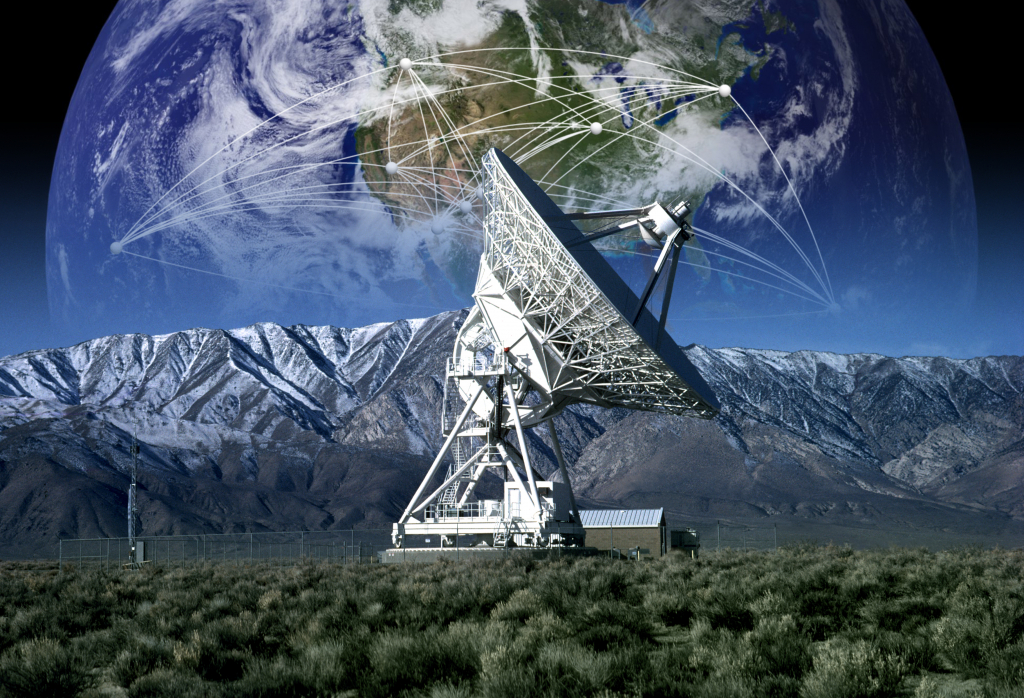The U.S. National Science Foundation National Radio Astronomy Observatory (NSF NRAO), in partnership with several leading Mexican universities and research institutes, has announced a series of landmark agreements and meetings aimed at advancing Mexico’s role in the Next Generation Very Large Array (ngVLA) project.
Recent News
Astronomers Discover a Superheated Star Factory in the Early Universe
Astronomers have uncovered a previously unknown, extreme kind of star factory by taking the temperature of a distant galaxy using the ALMA telescope. The galaxy is glowing intensely in superheated cosmic dust while forming stars 180 times faster than our own Milky Way.
Astronomers Share Largest Molecular Survey To-date: GOTHAM Legacy Data Goes Public
Astronomers in the “GBT Observations of TMC-1: Hunting Aromatic Molecules” research survey, known as GOTHAM, have released a spectral line survey with largest amount of telescope time ever conducted, charting more than 100 molecular species only found in deep space.
NRAO to Outfit the VLBA with New Ultra Wideband Receivers

The U.S. National Science Foundation National Radio Astronomy Observatory (NSF NRAO) has begun a major upgrade to the NSF Very Long Baseline Array (NSF VLBA) with the development and installation of state-of-the-art ultra wideband receivers capable of operating across the frequency range of 8 to 40 gigahertz (GHz). This new technology, first prototyped by NRAO in collaboration with NASA’s Jet Propulsion Laboratory (JPL), and tested on the NSF VLBA’s Owens Valley station, promises to significantly expand the scientific capabilities of the NSF VLBA.
The prototype receiver demonstrated excellent performance, with sensitivity comparable to the NSF VLBA’s existing X-band (8 GHz) and K-band (22 GHz) receivers—and better than the current Ku-band system. Most notably, the new technology will finally open the door to Ka-band observations (27–40 GHz) across the VLBA, enabling science at frequencies previously unavailable to the array.
“This new receiver represents a breakthrough in capability for the VLBA,” said Project Manager Antonia Hubbard. “With dual-band coverage at 8.4 and 32 GHz, and continuous sensitivity over an extraordinarily wide range of frequencies, we will be able to tackle new scientific questions while supporting critical national needs in astrometry and celestial reference frames.”
The project is strongly supported by the U.S. Naval Observatory (USNO), which funds 50 percent of VLBA operations and is especially interested in the precision astrometry that Ka-band access will make possible.
Unlike previous NSF NRAO receiver designs, the new wideband system integrates advanced front-end and digital backend technologies drawn from several recent research initiatives, with contributions from engineers and scientists across NSF NRAO’s facilities in New Mexico and West Virginia.
The project’s first phase is fully funded, with three receivers currently under construction. One receiver will be permanently installed on a VLBA antenna by October 2027. Completing the vision—a full set of ten receivers, one for each VLBA station—will provide uniform ultra wideband capability across the array.
“This wideband system leverages the initial engineering work of JPL,” added Walter Brisken. “By scaling that work up across the entire VLBA, we’ll give the astronomical community access to an unprecedented frequency range on the longest radio interferometer in the world.”
The VLBA provides unmatched angular resolution for radio astronomy, geodesy, and astrometry. The addition of ultra wideband receivers will ensure it remains at the cutting edge of discovery for decades to come.
About NRAO
The National Radio Astronomy Observatory is a facility of the U.S. National Science Foundation, operated under cooperative agreement by Associated Universities, Inc.
This news article was originally published on the NRAO website on September 16, 2025.
Recent News
NSF National Radio Astronomy Observatory and Mexican Institutions Sign Historic Agreements to Advance ngVLA Collaboration
The U.S. National Science Foundation National Radio Astronomy Observatory (NSF NRAO), in partnership with several leading Mexican universities and research institutes, has announced a series of landmark agreements and meetings aimed at advancing Mexico’s role in the Next Generation Very Large Array (ngVLA) project.
Astronomers Discover a Superheated Star Factory in the Early Universe
Astronomers have uncovered a previously unknown, extreme kind of star factory by taking the temperature of a distant galaxy using the ALMA telescope. The galaxy is glowing intensely in superheated cosmic dust while forming stars 180 times faster than our own Milky Way.
Astronomers Share Largest Molecular Survey To-date: GOTHAM Legacy Data Goes Public
Astronomers in the “GBT Observations of TMC-1: Hunting Aromatic Molecules” research survey, known as GOTHAM, have released a spectral line survey with largest amount of telescope time ever conducted, charting more than 100 molecular species only found in deep space.
